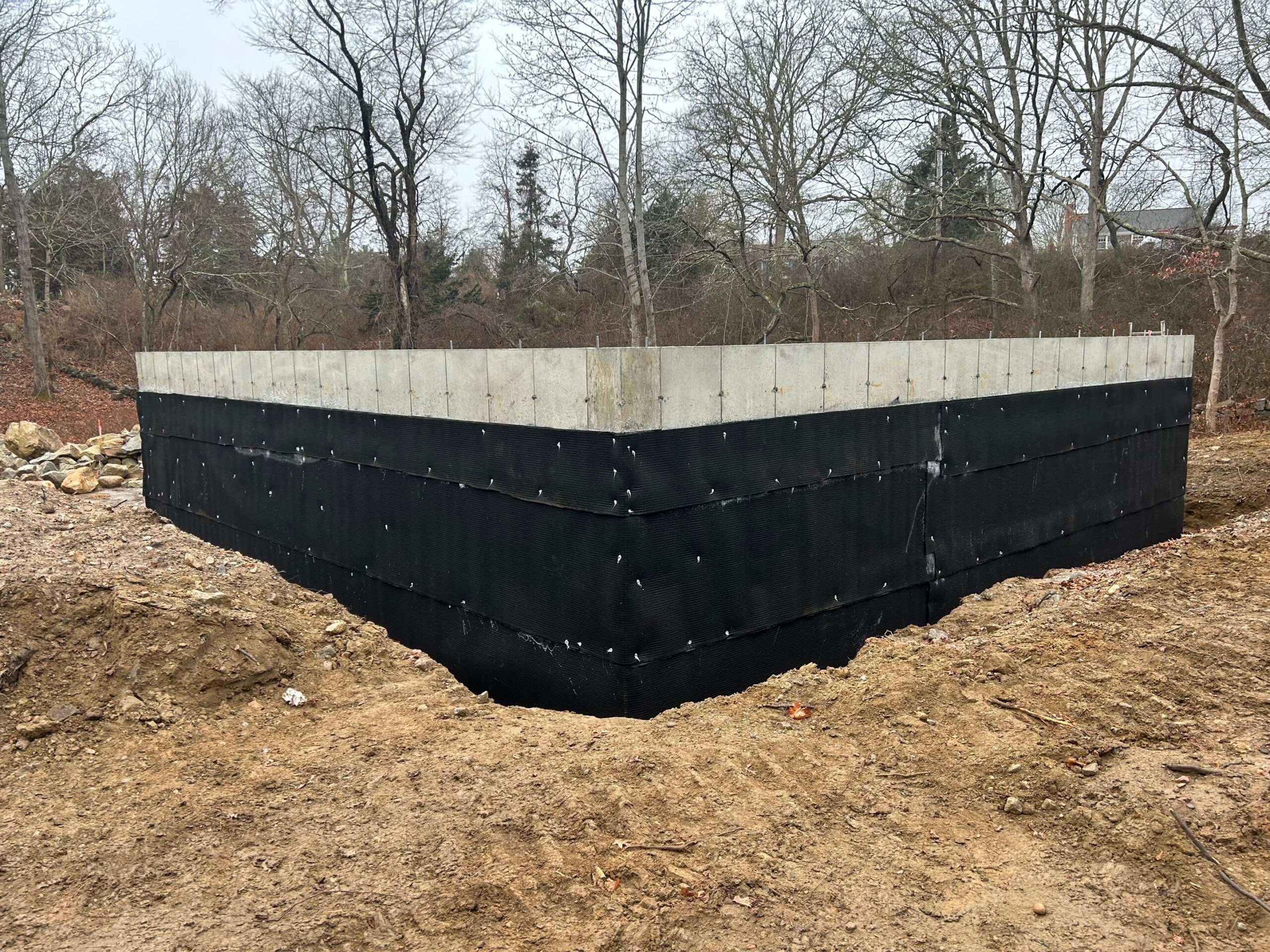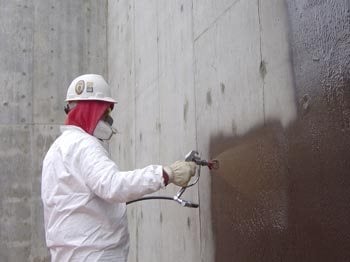Discovering the Various Methods and Solutions for Effective Damp Proofing
Moisture in structures positions substantial obstacles to both architectural honesty and interior air high quality. Numerous techniques and options have actually arised to battle this pervasive issue. From standard damp-proof membranes to innovative chemical therapies, each method provides distinct advantages. Comprehending these options is vital for efficient moisture control. Selecting the ideal service depends on certain building conditions and requirements, prompting further expedition into the most efficient wet proofing techniques readily available.
Understanding the Sources Of Moisture
Although wetness can arise from different resources, comprehending these reasons is essential for reliable removal. Frequently, wetness stems from three key resources: climbing damp, penetrating wet, and condensation. Climbing moist occurs when groundwater travels upwards through permeable products, such as block or rock, often due to an absence of an effective barrier (mould treatment newcastle). Penetrating wet is typically brought on by exterior elements, including roof leaks, damaged seamless gutters, or harmed walls, enabling water to infiltrate a home. Condensation, on the other hand, arises from excess dampness in the air, typically exacerbated by poor ventilation and temperature differences, resulting in water droplets basing on surface areas. Identifying these underlying concerns is necessary, as each kind of dampness needs a tailored technique for remediation. Proper assessment assists in figuring out one of the most effective services, ultimately safeguarding the structural stability of a building and improving indoor air top quality
Conventional Damp-Proof Membranes

Chemical Damp-Proofing Solutions
Chemical damp-proofing solutions offer a cutting-edge strategy to stop wetness invasion in structures. These methods commonly include the application of liquid chemicals that penetrate masonry and form a barrier versus increasing damp. Frequently utilized chemicals include silanes, siloxanes, and various other water-repellent representatives that respond with surface products to create a hydrophobic layer.The application procedure typically calls for exploration holes right into the wall surfaces, injecting the chemical solution, and enabling it to treat. This technique is particularly advantageous for older frameworks where traditional damp-proof membranes may be unwise. Chemical damp-proofing can be less disruptive and much more cost-effective than substantial restoration projects.While efficient, these remedies depend on proper application and environmental conditions for peak performance. mould removal newcastle. Routine maintenance and monitoring are crucial to assure the long life of the damp-proofing treatment. In general, chemical damp-proofing represents a functional alternative for safeguarding structures against moisture-related damages
Cavity Wall Surface Building And Construction Strategies
Cavity wall building and construction techniques offer numerous advantages, especially in wetness control and power effectiveness. By including an air space in between 2 layers of masonry, these walls effectively reduce water ingress while improving insulation. This mix not only safeguards structures from wetness however additionally contributes to reduced energy usage.
Advantages of Cavity Wall Surfaces
When considering efficient damp proofing methods, the advantages of tooth cavity wall surfaces stand apart prominently. Cavity wall surfaces include two different layers, creating an air void that effectively reduces wetness penetration. This layout minimizes the danger of moisture, as the outer wall surface acts as an obstacle versus rain and water ingress. Furthermore, cavity walls improve thermal insulation, which contributes to power efficiency by lowering warm loss. They also offer sound insulation, helping to produce a quieter indoor environment. In addition, the air space enables for ventilation, which helps in moisture control and reduces the possibility of mold growth. These advantages not just improve the total convenience of a structure yet also add to its durability and structural honesty.
Wetness Control Strategies
Reliable dampness control approaches are crucial in cavity wall surface building to ensure long-lasting defense against wetness. One main technique involves the incorporation of weep holes, which help with water drainage from the dental caries, protecting against accumulation. Additionally, the use of breathable membrane layers can aid handle dampness degrees while allowing trapped vapor to escape. Proper positioning of insulation is likewise crucial, as it must not obstruct drain courses. In addition, making sure that the external fallen leaves of the tooth cavity wall surface are built with water-resistant materials improves overall toughness. Normal maintenance checks are crucial to determine any blockages or damages early, guarding the framework's integrity. Ultimately, a combination of these methods develops a robust protection against moisture breach in tooth cavity wall surfaces.
Insulation and Energy Efficiency
Insulation plays a crucial role in enhancing power effectiveness within dental caries wall construction. By integrating shielding products, these wall surfaces produce a thermal barrier that reduces heat loss and lowers energy intake. Efficient insulation not just assists keep a steady interior temperature yet additionally reduces the risk of dampness, as it avoids condensation within the wall dental caries. Different strategies, such as making use of rigid foam boards or mineral woollen, can be utilized to accomplish perfect insulation efficiency. Furthermore, correct installment is vital to assure that gaps and gaps are reduced, which can or else compromise power performance. Eventually, a well-insulated cavity wall surface contributes substantially to general sustainability and decreases heating and cooling costs for homeowners.
External Damp Proofing Methods
External wet proofing methods are important for protecting frameworks from moisture seepage. Two reliable methods include the application of water resistant membranes and the installation of French drains. These remedies assist alleviate water build-up and preserve the stability of buildings.
Waterproof Membrane Layer Application
While numerous methods exist for preventing wetness ingress, the application of water resistant membrane layers stays a very reliable external damp proofing strategy. These membranes are usually made from products such as polyethylene, rubber, or changed bitumen, giving a robust barrier versus water penetration. The installation procedure entails using the membrane layer to the exterior surface areas of walls or structures, guaranteeing total insurance coverage to avoid leaks. Appropriate bond and sealing at joints are critical to maximizing effectiveness. Water resistant membrane layers can be applied in different forms, consisting of liquid coverings and sheet membranes, permitting adaptability based upon the particular demands of the framework. This technique not just shields structures from dampness however likewise improves their longevity and architectural integrity.
French Drain Setup
One reliable method for taking care of groundwater and avoiding moisture buildup around a building's foundation is the setup of a French drain. This water drainage system includes a trench loaded with crushed rock and a perforated pipeline that redirects surface water far from the foundation. Appropriate installment requires mindful planning, making sure that the drainpipe inclines far from the structure to promote optimal water flow. Additionally, the area of the drainpipe is essential; it must be positioned in locations prone to merging or excess wetness. Routine upkeep, including clearing up debris from the crushed rock and making certain the pipe remains unhampered, is crucial for long-lasting efficiency. Ultimately, a well-installed French drain can greatly reduce the danger of water-related issues in foundations and basements.
Interior Waterproofing Methods
Interior waterproofing techniques are crucial for safeguarding a structure's interior from wetness infiltration and prospective water damages. These approaches commonly involve the application of specific more info products and methods developed to produce a moisture barrier within the structure. One typical strategy is making use of water resistant finishings or sealants on walls and floors, which avoid wetness from passing through surfaces.Additionally, setting up indoor drain systems, such as sump pumps, can successfully take care of water accumulation in basements and crawl spaces. One more method involves using vapor barriers, which are installed to prevent wetness activity from the ground right into living spaces.Moreover, dealing with any fractures or voids in wall surfaces or foundations with proper sealants ensures a thorough defense versus water intrusion. By executing these indoor waterproofing approaches, home proprietors can greatly minimize the risk of mold and mildew development, architectural damages, and other moisture-related concerns. Appropriate execution of these strategies is essential for long-term defense and structure stability.
Normal Maintenance and Evaluation Practices
Normal maintenance and examination techniques are crucial for assuring the long-term performance of moist proofing services in any type of building. Regular checks enable homeowner to determine very early indications of moisture intrusion, such as peeling paint, mold and mildew development, and moldy odors. These signs can indicate underlying issues that need immediate attention.Inspections ought to be conducted a minimum of every year, focusing on at risk areas like cellars, creep spaces, and exterior walls. Throughout these analyses, homeowner need to examine sealers, drain systems, and ventilation to verify they function correctly.Additionally, preserving seamless gutters and downspouts is important, as blocked systems can cause water buildup near the structure. Executing a routine upkeep timetable, in addition to timely repair services, can substantially prolong the life expectancy of moist proofing actions and secure the architectural integrity of the building. Proactive measures inevitably contribute to the overall health and wellness of the living atmosphere.
Often Asked Inquiries
Just How Long Does Damp Proofing Normally Last?
The period of wet proofing efficiency varies, normally lasting in between 20 to 50 years. Aspects such as application top quality, environmental conditions, and upkeep methods substantially affect the durability of the moist proofing treatment.

Can I Damp Proof My Home Myself?
The private pondered the expediency of DIY damp proofing. With correct research and the appropriate products, it is possible. They additionally acknowledged the significance of professional assistance to assure lasting efficiency and prevent future concerns.
What Are the Signs of Inefficient Damp Proofing?
Signs of ineffective damp proofing consist of consistent mildewy odors, noticeable mold and mildew development, peeling off paint, moist spots on wall surfaces, and timber decay - damp removal newcastle. Home owners must address these concerns quickly to avoid further damages and wellness concerns
Does Damp Proofing Affect Indoor Air Quality?

Just How Much Does Specialist Damp Proofing Price?
Expert moist proofing expenses differ significantly, commonly varying from $1,000 to $5,000 relying on the residential property's size, the degree of the damp concern, and selected methods. Each scenario needs a customized evaluation for exact pricing. Commonly, dampness originates from 3 key sources: increasing moist, permeating moist, and condensation. When thinking about reliable damp proofing techniques, the advantages of cavity walls stand out prominently. Exterior damp proofing techniques are crucial for securing structures from moisture seepage. While numerous techniques exist for protecting against wetness access, the application of water resistant membranes remains a highly reliable outside damp proofing technique. Signs of inefficient moist proofing include persistent moldy smells, noticeable mold development, peeling paint, wet patches on walls, and timber degeneration.